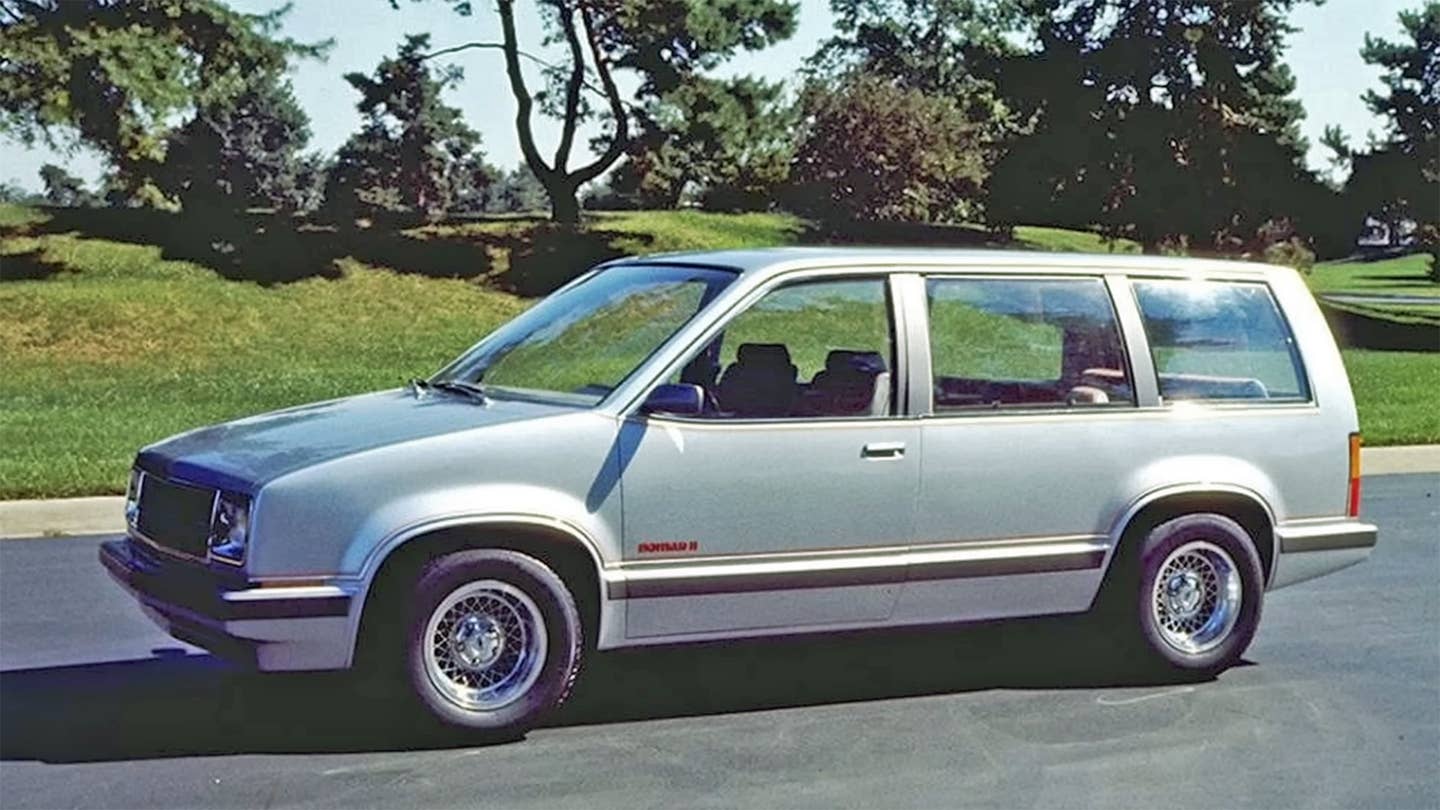Instead, Chrysler took America by storm with the Dodge Caravan.

If you’re a millennial, there’s a good chance you’ve spent time in the original Dodge Caravan. In 1984, Chrysler dropped an absolute smash hit with the first-generation Caravan, which not only became one of the most popular family cars in the country but pioneered the American minivan concept as we know it today. However, GM almost beat Chrysler to the punch five years earlier with a minivan of its own—the Chevrolet Nomad II.
In 1979, Chevy developed the Nomad II concept, a sleek-looking people-mover built on GM’s front-wheel-drive X-Car platform, which was shared with the Chevy Citation and Buick Skylark at the time. GM released little-to-no information about the car but it does have one photo of the Nomad II, which it hilariously sells as a poster.
GM would have had a hit on its hands, had the Nomad II gone into production. Not only did the American public unknowingly crave minivans but it was a good-looking car, far better looking than the minivans that came after it. The Nomad II wasn’t tall and van-like, it had a lower roofline, a low shoulder line, flared wheel arches, and a surprisingly wide wheel track. It looked more like a beefy wagon, just with more passenger space.
Interestingly, it didn’t seem to have a sliding passenger door, which would become one of the main selling points of the Dodge Caravan. From GM’s lone photo of the Nomad II, you can see the driver’s side only has a front door. However, judging by the B-pillars and flared rear wheel arches, it doesn’t seem that the passenger side would have accommodated a sliding door. So it likely just had a normal rear door.
While GM wasn’t the first American car company to pitch the idea of a small family van (Ford execs pitched the Mini-Max in the late ’70s) the Nomad II would have been the first front-wheel-drive minivan in America, had it reached production. Unfortunately, the Nomad II project was axed, as the suits at GM didn’t want it cannibalizing their highly profitable station wagon sales. Since the front-drive Nomad II would have been cheaper than GM’s rear-drive station wagons, while providing more interior space, it would have instantly become more attractive for many customers. The sad irony is that the Dodge Caravan eventually butchered all wagon sales, regardless of brand, in the U.S.
Chevy Nomad II | Chevrolet
That irony isn’t lost on GM, either. The description for its aforementioned poster reads: “The Nomad II received very strong ratings in customer clinics, but was not approved for production. Another company introduced a successful mini-van a few years later.” Someone still seems bitter.
Of course, after the incredible success of the Dodge Caravan, and all of its badge-engineered variants, GM did create its own front-wheel-drive minivans, but that wouldn’t come for another decade. The Chevy Lumina APV launched in 1990 and at the time it looked like a futuristic dustbuster, which gave it its “dustbuster van” nickname. And while the Lumina sold well enough, GM couldn’t catch up to the popular, well-established vans from Chrysler.
GM not building the Nomad II likely seemed inconsequential at the time but it turned out to be one of the biggest American automotive fumbles of the 20th century. The minivan segment was one of the hottest American car segments for decades and GM could have been its pioneer. Instead, it watched one of its main rivals take the win.
Got tips? Send ’em to tips@thedrive.com



